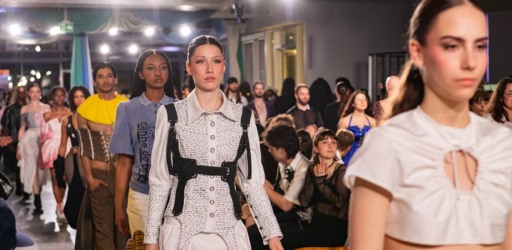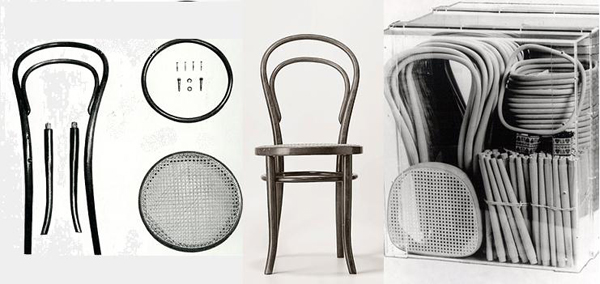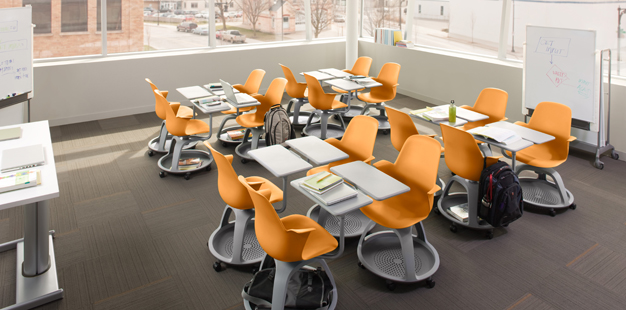
SIGNATURE 2024: A Fashion Show that Surprises with Innovation and Creativity
During the LaSalle College Festival, Montréal vibrated to the rhythm of fashion during our prestigious SIGNATURE fashion show.
Published by LCI Education, January 26th, 2017

Product design is less subjective than other design fields. The decisions made in this field should be justified by the usefulness and optimization of materials. This relative objectivity means that product design requires different procedures for generating and confirming ideas.
Ernest Perera, product design professor at the LCI Barcelona school, believes the design for Thonet’s (1859) no. 14 chair is superb. “It shows how a completely innovative product can be obtained through a complete picture of the design and new technologies. A chair built with a minimum number of parts (6 parts) for easy production, removable for easy transport and commercialization (36 of them can fit in one cubic meter!) and formal transparency, which enables it to be integrated anywhere.”
He also praised the design of the Hippo Roller (1997), a water barrel which can be rolled with a handle, “a project with the clear aim of improving living conditions for the most vulnerable people.”
A third example of a design that he likes is the Node Chair (IDEO) (2010), because it revolves around a process of design thinking concerning things that were happening in colleges 50 years ago, and happen today. “It shows that assessing a project from different perspectives enables you to achieve more effective solutions.”
To achieve products such as these, you need teams, training, and work methodology. Professor Perera spoke of the importance of mainstreaming in product design.

There is a great deal of subjectivity in the design field. How do product designers feel about submitting their ideas to the appraisal of a manager?
In the product design field I do not believe that there is as much subjectivity as in other more artistic areas. A good designer must be aware of why they chose certain options during an assignment: what is the best material, function and also shape. If this is clear, it is easier to defend their idea in front of their manager, who, while he or she may be paying them to do as told, also needs them to continue generating competitive products.
So, designers who focus on designing products have less artistic ambition than those who do so in other branches, such as advertising?
I believe that artistic ambition in product design is the same as in other specialties. From esthetic ambition (we could here refer to Raymond Loewy’s book Never leave well enough alone) to experimental ambition: communicating new values for future society, changing and improving it through design.

Are there such distinctive hierarchical layers in other design fields?
I don’t really believe in layers, they are expediencies which can sometimes seem class-based. It can be said that there is an order or a methodology to each project. I believe that everyone who participates in a project is important and should act with the same level of professionalism. From the customer who gives the assignment (who doesn’t know what they want most of the time) to the draftsman, who should know how to communicate the final design to the producer through drawings. We could say that the role of the designer is that of an orchestra conductor: to understand and know each of the musicians and set the right melody for each part.
Do you think that it is appropriate to include the customer in the process?
Yes, increasingly so. A product isn’t done with once it hits the market. That is the beginning, when you start to see people’s responses to it. The design changes will depend on that. An obvious example of this is crowd funding, in which the buyer is not only an investor in the project, but they help to improve it before it arrives on the market.
What are the advantages of using transversal teams when everyone can put forward ideas? And multi-disciplinary teams which include specialists in various fields?
Having a multifaceted view of a project enables you to improve certain aspects that couldn’t be seen with just one look. Shared creation is a reality and large companies use this to be more competitive. What is important is knowing how to channel these views for an optimal result. The designers, because of the way they work, are ideal for this role.

What transversal skills, excepting those relating to their activity, should people who work as product designers have, in your opinion?
They must have many skills. Being able to ask themselves the right questions and being able to answer them is a vital trait. Also, being able to apply technical know-how of materials and production systems to generate correct shapes and concepts. We believe that knowing the various methodologies for generating ideas and being able to apply them is a unique characteristic of product designers.
Given that design-related professions have changed so much in recent years and that they will probably continue to change, what do you think future product designers will have to concentrate on?
At LCI Barcelona we are convinced that there will be a boom of technological products in all domains. We are increasingly looking at smart home appliances, wearables, driverless cars, etc. Being able to humanize them and make sure that they improve people’s lives is, largely, the aim of a product designer.
–
LCI Barcelona introduced the Official Master’s Degree in Technologic Product Design at the same time as the Official Master’s Degree in Creation and Development of Digital Projects and the Master’s Degree in Experience Interiors Design (own qualification).